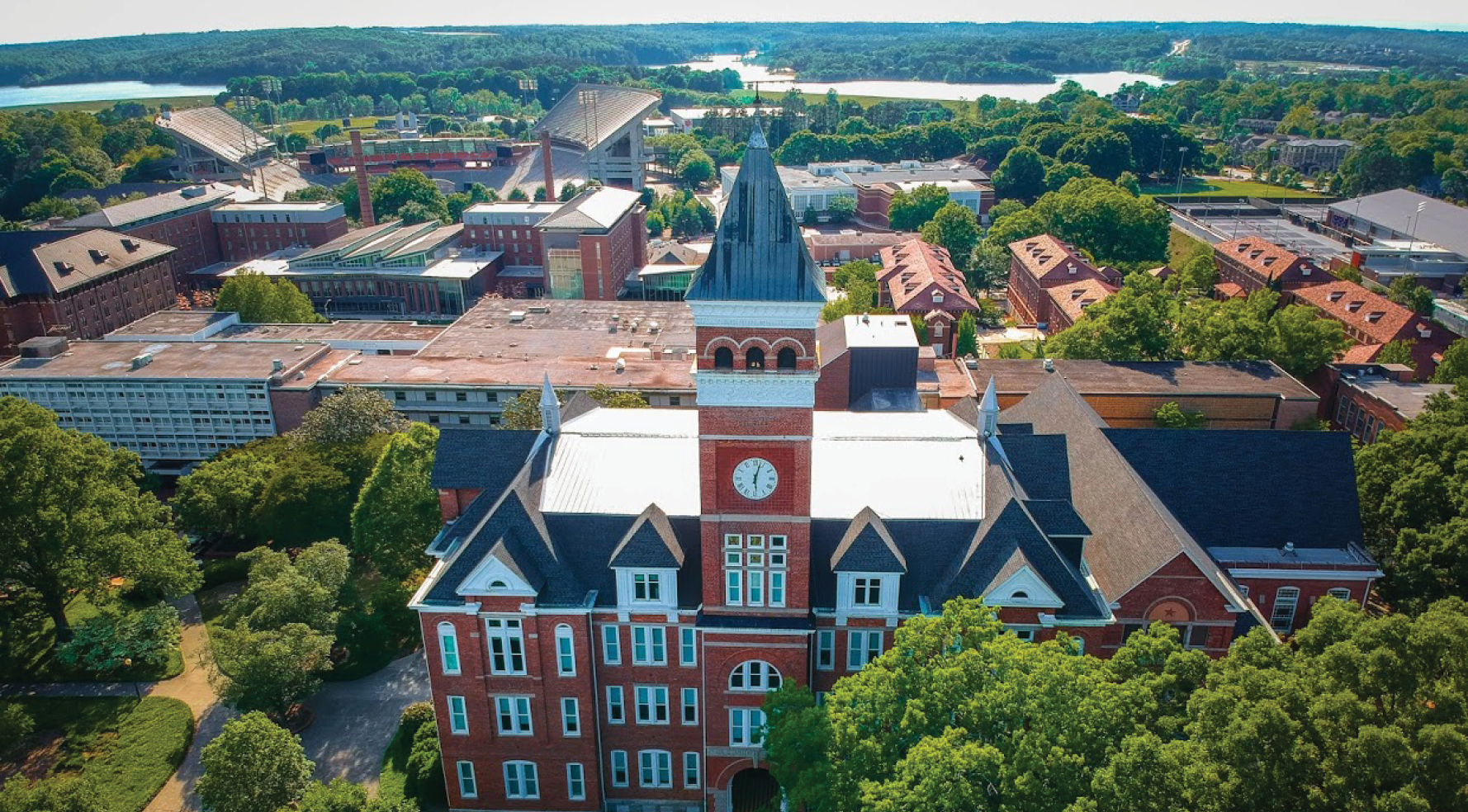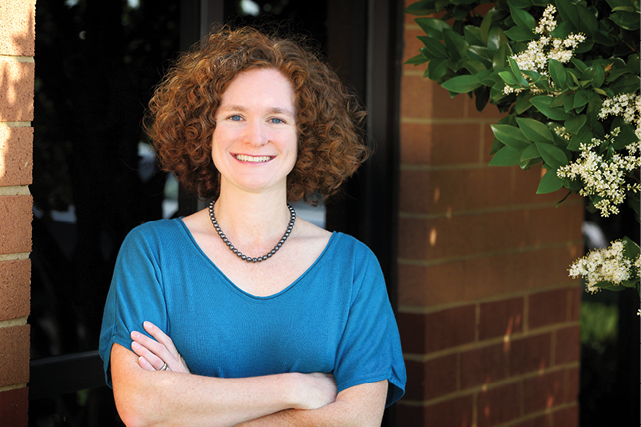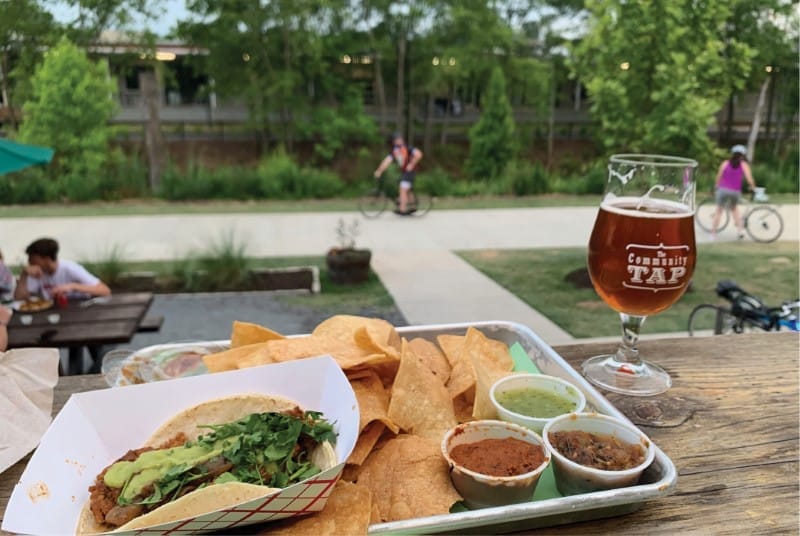Boyd Johnson, co-founder with his wife Nicole Johnson of Greenville-based high-tech bicycle wheel manufacturer BOYD Cycling, likes to compare their company to a craft brewery. That’s not just because he likes a good brew.
The comparison is more about the way an organically built company can find its niche — and its literal place — as a globally competitive enterprise. Mark it as a symbol of the Upstate sustainability ethos.
That ethos went a step further this spring when the company announced it was reshoring the manufacture of its alloy wheel rims for U.S.-sold wheels from Taiwan to its newly founded Olive Manufacturing Group (yes, they go by OMG), located about 15 minutes away from BOYD’s home base just north of Furman University, very close to the Prisma Health Swamp Rabbit Trail used by hundreds of cyclists, runners and walkers every day between Greenville and Travelers Rest.
“Through Covid, we saw the strain placed on the supply chain and also a bike boom that lasted a couple years,” said Nicole Johnson. “Instead of purchasing an excess of inventory, we focused on creating better techniques and working to develop customized machines to bring our production home. We can now produce high-performance alloy bicycle rims here in Greenville without a price hike. In addition to our rims, there are also opportunities for other brands to onshore their alloy rim production in our facility while reducing lead times and costs. This will benefit the entire cycling industry by offering quicker turnaround without the supply chain issues of shipping products around the world.”
In fact, the company aims for the OMG facility to become nothing less than “the largest aluminum bicycle rim manufacturing facility in the United States.”
BOYD’s original HQ was located closer to downtown Greenville where it redeveloped part of what is now The Commons food hall in Unity Park, also next to the Swamp Rabbit Trail. The complex now houses several businesses that include a brewpub. You can take a pint and some Automatic Tacos out on the deck to watch other trail users roll, run and amble by.
That’s exactly what I did after my ride up and back on that trail in June. Earlier in the day I’d sat at a nearby picnic table with Danielle Besser, communications & engagement manager for the Upstate SC Alliance; Jackie Baxley, principal & EHS&S practice leader at environmental engineering consultancy HRP Associates; and Ethel Bunch, president and CEO of Sustain SC, an organization that describes itself as commerce-driven and conservation-minded. Which could describe most Upstaters I’ve met.
As Bunch neatly describes it, “If everyone gets in the room, you can normally come to a commerce and conservation solution without a courtroom … Our mission is to connect the sustainability goals of business with local solutions.” That mission is accomplished through direct consultation and convening, as well as through the Sustainability Leadership Initiative (SLI), where 24 selected participants from a cross-section of business, institutions, communities and NGOs earn a certification over a six-session, eight-month program hosted by Furman University.
Baxley, who just graduated in the SLI’s second cohort, says the word “sustainability” is “squishy” because it means different things to different people. It might conjure a tree-hugging, off-the-grid hippie, but it’s also important to facilities managers looking at energy use and to industrial planners and consultants like her who evaluate risk related to climate change. “What I loved about SLI was it exposed me to various people who are in the same space as me but I would never have met,” she says, noting one participant who taught her about conservation easements. “I was like, ‘I wish I had land to give you right now,’ ” she says. “It’s that platform for collaboration.”

Clemson University
Photo courtesy of Lake Hartwell Country Tourism, South Carolina (lakehartwellcountry.com)
Baxley knows all about sustainability at industrial sites, having helped with environmental issues at the redeveloped Judson Mill site, a 100-year-old former Milliken textile manufacturing location where HRP’s offices are situated. Today Judson Mill is a model of industrial chic, with a tall smokestack as a calling card and newly constructed, high-dollar condos. Feed & Seed offers organic and other South Carolina–grown products, not far from the BlocHaven indoor climbing gym, The Foundry music hall, the High Spirits Hospitality event space, Stumpy’s Hatchet House, Magnetic South Brewery and Jud Hub Social Innovation Center, featuring shared workspace, office suites and conference/meeting rooms for “entrepreneurs, startups and social innovators.”
The Upstate is a model for how sustainability and site selection intersect, says Baxley. Start with the scattergram of old mill-related and textile industry infrastructure being rehabilitated across the region. Historic warehouses are being remodeled at every turn. And healthy transportation options are top of mind. “It’s a perfect example of green space, recreational space and business space cohabitating,” she says.
Trails and Destinations
Just up I-85 a piece, there’s another cool downtown and region getting set to welcome both another rails-to-trails path and another bicycle company. TIME Bicycles, a French high-performance carbon bicycle manufacturer, announced in March it will invest $6.5 million and create 105 new jobs at what it says will be the nation’s largest carbon fiber bicycle factory at a renovated factory building in Landrum, a small town of 2,500 people known for its horse culture at the foot of the Blue Ridge Mountains in Spartanburg County. A subsidiary of Cardinal Cycling Group, TIME makes bicycles that have won Olympic gold and numerous stages of the Tour de France. The manufacturer is just one more in a cavalcade of European companies that have planted their flags in the Upstate since BMW arrived 30 years ago.
“The infrastructure that exists within this region for advanced manufacturing is unrivaled,” said TIME Bicycles CEO Tony Karklins. “Through our collaboration with Clemson University, KraussMaffei and The SC Fraunhofer USA Alliance, we look to produce the most advanced carbon fiber bicycles in the world, with technologies and partnerships in place to rival production out of Asia.”
The company’s chosen site is on the Saluda Grade Trail, a famously challenging Norfolk Southern rail route that soon will become a similarly challenging 31-mile trail system all the way from Saluda, North Carolina, down to Spartanburg proper. “TIME’s presence helps put Spartanburg County on the map among top cyclists from around the world,” said Laura Ringo, executive director of PAL, which stands for Play, Advocate and Live Well. “And, in case there is any question, this is another example of how trails drive economic development from small to international businesses.”
Kyle Sox, vice president of industrial development at OneSpartanburg, Inc., lives in Landrum. He knew TIME wanted to be near a trail and that most of the company’s employees were avid cyclists themselves. “They were looking all over downtown. I happened to know of the closure of a legacy company in Landrum and I told Tony there was the potential of a rail trail. I said, ‘Tony, we’re gonna go for a ride.’ ”
An area that may feel out of the way to some turned out to be just right. “Landrum is around 1,000 feet above sea level. Hogback Mountain is 3,400 feet,” Sox says. “That’s the Saluda Grade. If you’re an elite cyclist, that’s what you want.”

OneSpartanburg’s Kyle Sox says places like his community are appealing because they feel “really real.”
Photo courtesy of OneSpartanburg
Michelle Tennant Nicholson, chief creative officer for Wasabi Publicity, has made her home in Saluda with her husband Shannon since 2002. Both of them are avid whitewater kayakers and mountain bikers and appreciate all that’s going on south of the state line in the Upstate. “Any improvements in trail systems that empower residents to enjoy nature and the pristine habitat around Saluda excite me,” she says. “Many people don’t know that there is only one other place on the planet — in Italy — that shares the ozone quality Saluda has, making its air some of the healthiest to breathe in the world. I used to say to my public relations clients that Saluda’s clean air helps my creativity … I think there is something to that. Quality of life keeps your nervous system straight.”
Places That Are ‘Really Real’
Sox can see how the momentum of the 50 miles of trail to be called the Daniel Morgan Trail system will connect with the downtown momentum in Spartanburg being driven by the likes of M Peters Group’s $75 million downtown retail redevelopment and the forthcoming arrival of a minor league baseball stadium just around the corner from a soon-to-be-rebuilt City Hall, a new planetarium at the library and the location of the first Black Lives Matter street mural to appear in the state. The baseball team, an affiliate of the Texas Rangers currently playing as the Down East Wood Ducks in North Carolina, could begin playing in Spartanburg as soon as the 2025 Minor League Baseball season. Diamond Baseball Holdings, the club’s new majority owner, would lease the stadium from the City of Spartanburg. The site is adjacent to the south side of town, a languishing majority-Black neighborhood that would be reconnected with downtown — “rather than being literally on the other side of the tracks” — with the potential redevelopment of an industrial cluster in an area known as the Grain District.
Sox says the opportunity is now, as rents haven’t yet caught up to construction costs. A tax break requiring residential development to have a certain degree of attainable, affordable housing is firmly in place. “We are cognizant of the G-word — gentrification,” he says. At the same time, on the industrial side, there is an unprecedented amount of industrial space under construction that has been estimated at anywhere between 13 million and 18 million sq. ft.
During a walking tour guided by Sox, a major stage was being erected for a concert by the country group Diamond Rio, part of the week’s festivities surrounding the BMW Charity Pro-Am, a Korn Ferry Tour golf tournament. Nearby is a pandemic-inspired pedestrian zone that has now become permanent. “A Frenchman told me ‘Americans don’t do this.’ But we did,” says Sox of the outdoor tables at restaurant after restaurant. Soon we were sitting at one on a nearby street at Lemongrass Kitchen and being waited on by its straightforward proprietor Brian Nguyen, who relocated from San Diego to be part of this emerging scene.

TIME Bicycles and BOYD Cycling both are investing and creating jobs in the Upstate.
Photo courtesy of TIME Bicycles
“Something about this place feels really real,” Sox says. “There is opportunity and grit here. Not everything is polished and new.” You can walk into an old downtown tavern like The Nu-Way Lounge & Restaurant and order a Trailer Park burger or drop into Venus Pie New York-style pizzeria. You can just as easily walk past the corporate HQ of Denny’s and enter one of five Spartanburg Community College campuses, located on the former site of Spartanburg High School a few blocks away.
Other Upstate towns not named Spartanburg or Greenville are attracting interest from companies and citizens alike. Sox calls Woodruff on the southern end of the region a “diamond in the rough. He describes Greer, familiar to industry as home to an inland port, as “super walkable” with its own food hall. Laurens has its own downtown scene, as do Anderson, Clemson (the town) and other Main Street places like Mauldin, Fountain Inn, Seneca, Greenwood and Simpsonville.
“Laurens, with a 50% industrial workforce, gets a lot of looks from industry,” Sox says, but nowadays, “we take prospects there as a place to live. Travelers Rest used to be a store and a gas station. Now it’s a cultural community. It’s a destination.”
Startup Energy in All Directions
Cecilia Zapata-Harms is COO of VYRTY/Sync.MD. She found her company’s destination two years ago at the Anderson County Incubator at 1428, a landing pad and incubator located in downtown Anderson. Sync.MD specializes in the secure mobile data storage of health and medical records. “Sync.MD landing in the Upstate represents areas where the Upstate is poised for growth — life sciences, technology and market entry into a landing pad space,” said Upstate SC Alliance President and CEO John Lummus when the company arrived in June 2021. “We look forward to seeing this innovative digital health solutions provider grow in our region.”
Zapata-Harms says the company has grown from 10 full-time employees in the area to 16 today, plus seven software developers located in various spots on the globe. She says the relocation search for the company started in 2018-19 as finding talent and even investors was becoming increasingly difficult in what she calls the “noisy and crowded” tech space of Greater Seattle, competing not only with other entrepreneurial firms but with the likes of big employers such as Microsoft, Amazon, Google and Facebook.
As the search began, the company’s CEO struck up a close relationship with Congressman Jeff Duncan, a Clemson graduate representing South Carolina’s Third District. “He said, ‘South Carolina is expanding its technology hub. Why don’t you come visit our state?’ So we did,” Zapata-Harms says. After a week of friendly meetings with everyone from the state’s commerce department to military veterans (a population well suited for Sync.MD’s technology), she and the CEO looked at each other at the airport and said, “This is it.”
That was in February 2021. Once board approval was secured, staff were informed and by spring seven employees and their families were “packing up, moving and closing the door in Redmond,” she says.
All the infrastructure and hospitality was fine. Even finer was the Series B financing round the company had just opened that within three months of relocation had closed — with all South Carolina–based investors. “I think the planets were aligned,” Zapata-Harms says. “The South Carolina business community really support each other. They want all businesses to succeed and will do anything they can do to introduce, make connections and build that relationship.”

Jackie Baxley, HRP Associates
She’s found great support and value from the Upstate SC Alliance and groups such as NEXT, the Greenville-based hub supporting high-impact startups and entrepreneurs with programming, venture monitoring, founder workshops and flexible workspace, among other services. The area talent pool could stand to be improved in IT and software engineering, she says, and groups like NEXT (as well as area universities and colleges) are responsive and proactive. They also help spark new connections and ideas. A company founder may not feel the time or energy is available to think about new things. “But somewhere in there when you’re involved with groups like NEXT, you meet all these people and innovation comes,” she says. “There are a lot of opportunities in those groups.”
It’s a familiar sensation across the Upstate. Opportunities arise. Connections are forged. Destinations are everywhere you look. And the journeys to them are worth taking.
Baxley says when she graduated in 1998 and worked for Milliken she never would have considered moving to Travelers Rest. “If I were graduating today, I would be living in Travelers Rest and loving the interconnection of the live-work-play,” she says. In the site selection arena today, she says, “having these interconnected communities is a real draw for that workforce.”
Why? It’s simple. When you live in a place with that kind of balance, says Baxley, “You want to be where you are.”

